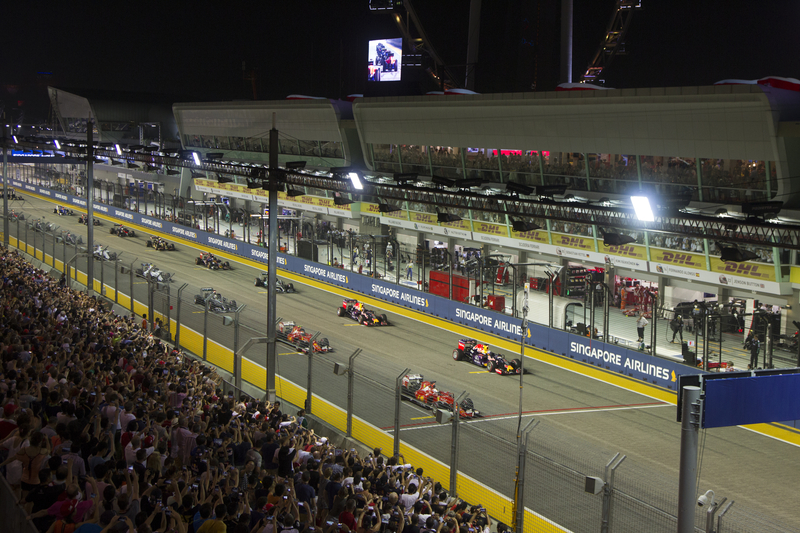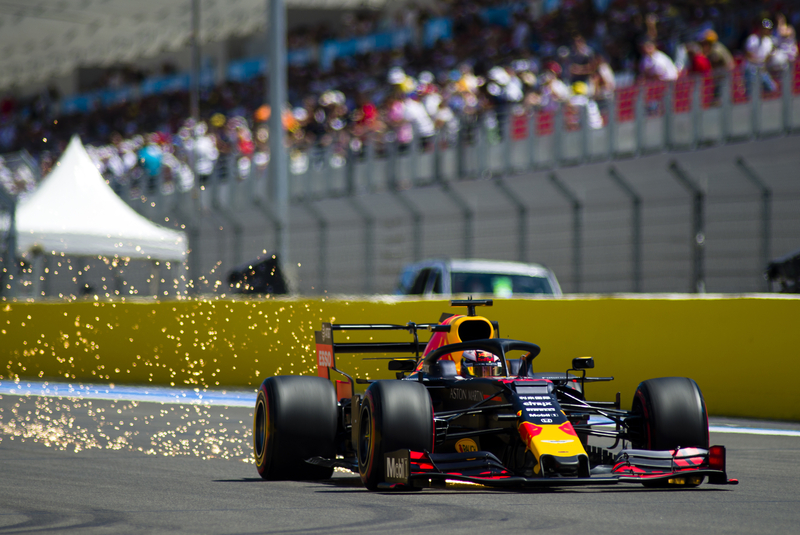Last updated on July 7th, 2022 at 11:18 am
Like many motorsports’ races, Formula One Grand Prix comes in various race distances and lap layouts based on the race location. However, the FIA does put forth some guidelines that dictate how long or short a race can be.
Generally, most F1 races are about 305 kilometers in the distance and finish in under two hours. There are plenty of rules and regulations that dictate how long a race can go, so here’s an overview of the finer details regarding the length of a Formula 1 Grand Prix.
What is the Minimum Distance of a Formula 1 Grand Prix?
The FIA states that all races on the Formula One World Championship calendar must be at least 305 kilometers, or 190 miles long. This distance makes this limit fit in with varying sizes and shapes of race tracks. The rules state that there should be as many laps as necessary to accomplish the minimum 305-kilometer distance. That means that each race has a different number of laps.
The longest race track on the Formula One calendar is the Belgian Grand Prix at Circuit de Spa-Francorchamps in Belgium. Since the track is slightly over seven kilometers long, drivers must complete 44 laps to reach the 305km minimum. Meanwhile, the Monaco Grand Prix takes place on the shortest track on the calendar. That street circuit is only 3.33 kilometers long and takes 78 laps to complete.
How Much Time Does a Formula 1 Take?
Since F1 cars go so fast, they can finish a 190-mile race relatively quickly. Most races take only about an hour and a half to complete. The FIA sets a hard limit stating that the race can take no longer than two hours. The timer for two hours starts after the warm-up lap (which is called a formation lap) when all the cars have lined up on the grid, and the five red lights have gone out.
There are a few situations where a race time can exceed that duration. Race control can stop the race by calling for a red flag. Red flags call for an entire race pause and require that all cars go to the pit lane. This process clears the track so that race marshals can clear the course of debris or disabled vehicles. The red flag procedure also allows for repairs to the track safely.
If the race stops during a red flag, stoppage and racing time must be shorter than three hours. This stoppage means that there can only be one hour of stoppage time during a race. This time requirement is a recent rule change during the 2021 season. Before that, races had to complete within a four-hour window.
What is The Shortest and Longest F1 Race?
The shortest race during the F1 season might be the most famous Grand Prix. Monaco’s historical Grand Prix has the highest number of laps in any Grand Prix and the shortest distance. The race is only 260 kilometers long, or 162 miles. Monaco is a historic race, so it’s allowed to remain on the schedule despite its short distance.
The longest race is the French Grand Prix, which takes place at the Circuit Paul Ricard in Castellet, France. That race is 309.7 kilometers long, almost an entire mile longer than the minimum race length set by the FIA.
How Fast do Formula 1 Cars Complete a Race?
As mentioned above, most Formula 1 races take less than an hour and a half from start to finish. For example, most experts consider the Italian Grand Prix at Monza the shortest race on the calendar, as it’s typically completed in under 80 minutes. Monza’s race track allows for high speeds, with Ferrari Driver Rubens Barrichello setting the fastest lap time at 1:21:046.
Meanwhile, Monaco is often one of the slowest races. Since the Monaco Grand Prix happens on an antiquated street circuit, drivers normally complete a lap at a much slower pace than they would on a race track. Mercedes driver Lewis Hamilton has the lap record for Monaco, with a 1:12:909.
To further illustrate this point, you only have to see that drivers at Monaco only reach about half the speed of those at Monza. The fastest speeds achieved in Monte Carlo are about 170 kilometers per hour, while drivers in Italy reach about 350 kilometers per hour.
Are there Rain Delays in Formula 1?
Unlike many motorsport competitions, F1 drivers don’t get the benefit of sitting out when it rains. Races may postpone for dangerous conditions, such as poor visibility, wind, or lightning. However, if there’s just a bit of water, the race will continue.
Pirelli, the tyre manufacturer for Formula 1, provides three different tyre compounds for each race. These are hard, medium, and soft compounds that relate to each tyre’s durability. The company also offers two tires for inclement weather, a wet weather tyre, and intermediates.
Wet weather tyres have large grooves to move water out from under the car and improve grip. Intermediate tyres are designed for a damp track without standing water, which can be slippery for slick racing tyres.
What Else Impacts the Length of a Formula 1 Race?
Formula 1 races rarely deviate from the schedule and are usually completed within the FIA’s two-hour limit. This time limit exists for two reasons. One is to ensure driver safety, as drivers can get fatigued after driving for long periods. The second reason is that the racing cars may run out of fuel. Unlike many motorsports competitions, refueling is prohibited during Formula 1 pit stops. That means all cars must start with the fuel they need to finish the race.
After each race, the FIA samples the fuel in each vehicle to ensure that its formula is within current standards. If there isn’t at least one liter of fuel left over at the end of a race, that driver can be disqualified from the race. This disqualification took place in the 2021 Hungarian Grand Prix when Sebastian Vettel’s car had an insufficient amount of fuel in the vehicle. That means it’s essential for drivers to operate their vehicles as efficiently as possible during a race.
By the end of a race weekend, drivers will have spent several hours in the car. The weekend usually starts on Thursday or Friday with free practice sessions followed by qualifying sessions on Saturday. Qualifying helps dictate grid position for the start of the race.
Do F1 Drivers Go to the Bathroom in their Suits?
Once the race starts on Sunday, drivers have to focus on making it to the finish line. That means there’s not much time for bathroom breaks during a race weekend. Many drivers will go in their race suits.
Managing water intake and loss due to sweating is essential for an F1 team’s medical staff. Drivers have to weigh themselves at the beginning and end of the race to ensure they haven’t lost too much water.
Conclusion: How Long is a Formula 1 Race
Like many motorsports, Formula 1 races come in a range of distances. Since the minimum race length required by the FIA is 305 kilometers, most are around that long. The clear standout is the Monaco Grand Prix, only 260 kilometers long.
Besides the restrictions on length, Formula 1 races must be two-hours or less. This two-hour window makes them easy for viewers to watch and popular among young people who may not want to spend all afternoon watching a motor race.
Similar Posts:
How Many Cars in a NASCAR Race?
How Many Laps in a NASCAR Race?
What is the Difference Between NASCAR and Formula 1?
How Do You Become a NASCAR Driver?
Does Formula 1 Race in the Rain?
How Much Do Formula 2 and 3 Drivers Make?
Greg Kristan, owner of The Stadium Reviews, LLC and TM Blast, LLC, brings his extensive experience visiting over half of the MLB ballparks, along with numerous MLS, NHL, NBA, and NFL venues, to provide in-depth coverage on the bag policy, food options, and parking. He has also been interviewed about his experiences on several sports podcasts.









